It has been a hot and dry summer in Scandinavia. Wasps have been a plague in many areas. They have been in every apple, every drink and every house. Some of them may have crossed a stream or river, winding up on the surface before continueing the rush. Some of them never left again.
Late summer summer 2006 was hot and dry here in Denmark. Three records were challenged:
The highest temperature in June, the number of sunny hours and the number of wasps. Was it a result of global warming? The heat stopped most of fishing and we just moved slowly waiting for lower temperatures.
When we came into August we had all the rain we missed in July. Half way through the month we had already had almost three times as much as we get in a normal August.
These circumstances brought thousands of wasps on their wings and they looked for new places to build their cubes and constantly investigated our house for several evenings. They bumped against our windows and they got through the narrowest opening.
This wasp imitation is very simple. It consists of a pre-made foam body and a few materials to simulate legs and wings. It is a large imitation and might be useful as an indicator on those streams, where the rainbows swallow wasps and bees. In smaller sizes it may imitate hoverflies (Episyrphus balteatus) very well and may be a good fly for the sea run browns, which some times feed on these flies as well as ants and beetles blown from the shore onto the water during late summer days.
I had better tie some, so I will be ready for that situation.
- Log in to post comments



















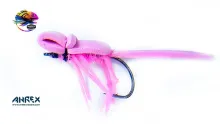
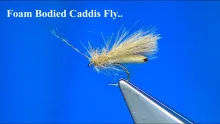
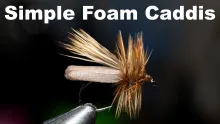
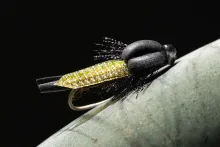
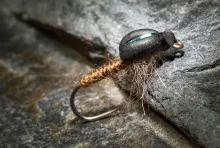


FYI- Fly tyer Magazi
FYI- Fly tyer Magazine, Winter 2003 has a good article on making foam bodies by gluing sheets of craft foam together, then cutting the bodies with a sharpened tube hammered thru the stack of foam. Some of mine were OK, but I do a terrible job of shaping them with a knife. The current edition suggests impaling the bodies on a needle, put the needle in a drill and shape conical bodies with an emory board.
Mike,
I hope the
Mike,
I hope the pattern will make your day. I have fished in Wanganui 10 years ago...phew!
Let us know if you catch any, and upload some pictures from N.Z and your coming fishing trips in the gallery. It would be great to see a New Zealand trout hooked on foamy wasp...or just some pics from Wanganui and Tongariro.
Kasper Mühlbach
Hello Kasper, I am o
Hello Kasper, I am on the other side of the world to you but I sure could of used one of these flys last week, I was fishing the Wanganui river in the central North Island of New Zealand and there were heaps of bees buzzing around even though it is the middle of winter!
Thank you very much for the pattern, I will try it out sometime this spring.
All the best.
Mike